
Fractals found in nature | LazingBee / Getty Images
Have you ever noticed how certain patterns in nature evoke a sense of awe and wonder?
These mesmerizing patterns, known as fractals, are complex patterns that repeat at various scales, creating intricate designs observable from the microscopic to the cosmic level. These structures are abundant in nature, appearing in everything from coastlines and mountains to leaves and snowflakes. Their natural beauty and efficiency have inspired architecture, where fractal patterns have been utilized to create visually commanding and functionally resilient buildings.
First developed in the 1970s by Benoit Mandelbrot – an American-French-Polish mathematician, fractal geometry introduced a new way to understand irregular shapes found in nature. Unlike traditional Euclidean geometry, which relies on straight lines and simple curves, fractals are defined by key characteristics like self-similarity and fractional dimensions.
These properties allow fractals to replicate itself to create a detailed pattern, in ways that traditional geometry cannot, offering endless creative possibilities in architecture. As one zooms in closer, the shape remains consistent – showcasing the mesmerizing beauty of a fractal!
However, fractals embody simplicity within their complexity. They start as a basic shape, but it’s the repeated pattern that creates an intricate look. Arranged with precision, even a few mathematical values can define their form. One of the most intriguing aspects of fractal geometry is that these shapes exist within the realms of 1D, 2D, and 3D dimensions.
Fractal geometry in architecture appears in two forms: unintentional and intentional. Unintentional fractal geometry often arises in aesthetically driven designs, where repeating patterns form naturally, creating visual appeal. Intentional fractal geometry, on the other hand, is crafted deliberately to convey a particular concept or idea.
Fractals in Traditional Architecture
Ancient architects used fractal-like patterns long before Mandelbrot’s theories. In Islamic architecture, for example, the Alhambra in Spain features mesmerizing mosaics with repeating geometric designs. Similarly, Indian temples often incorporate spire patterns that appear at varying scales, echoing fractal principles. Vernacular architecture, too, often mirrors natural fractals; the arrangement of huts in African villages or the spirals in Celtic designs are shaped by repeating elements that create a cohesive visual harmony reflective of their environments.
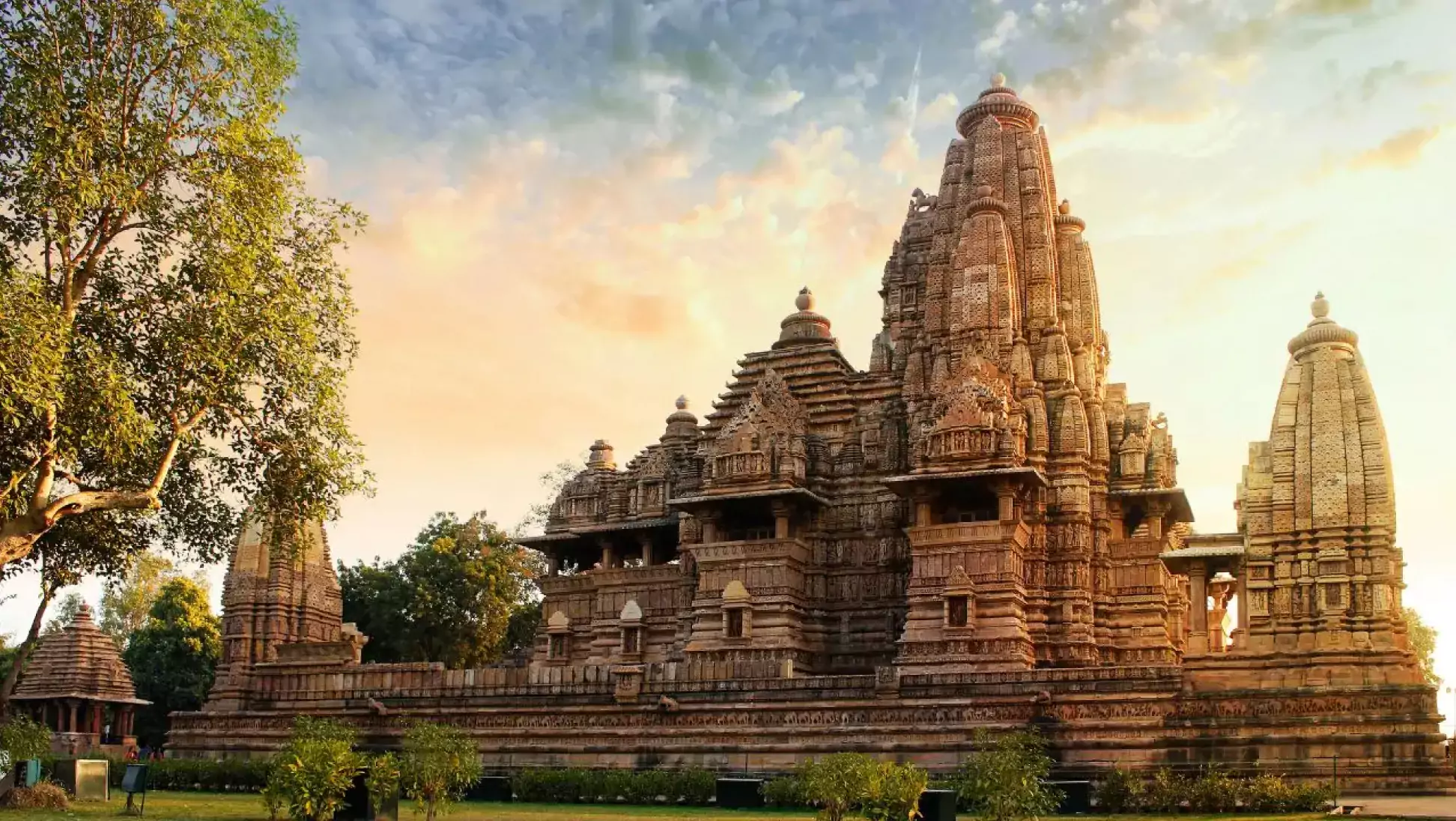
Spires of the famous temples of Khajuraho, India | Source
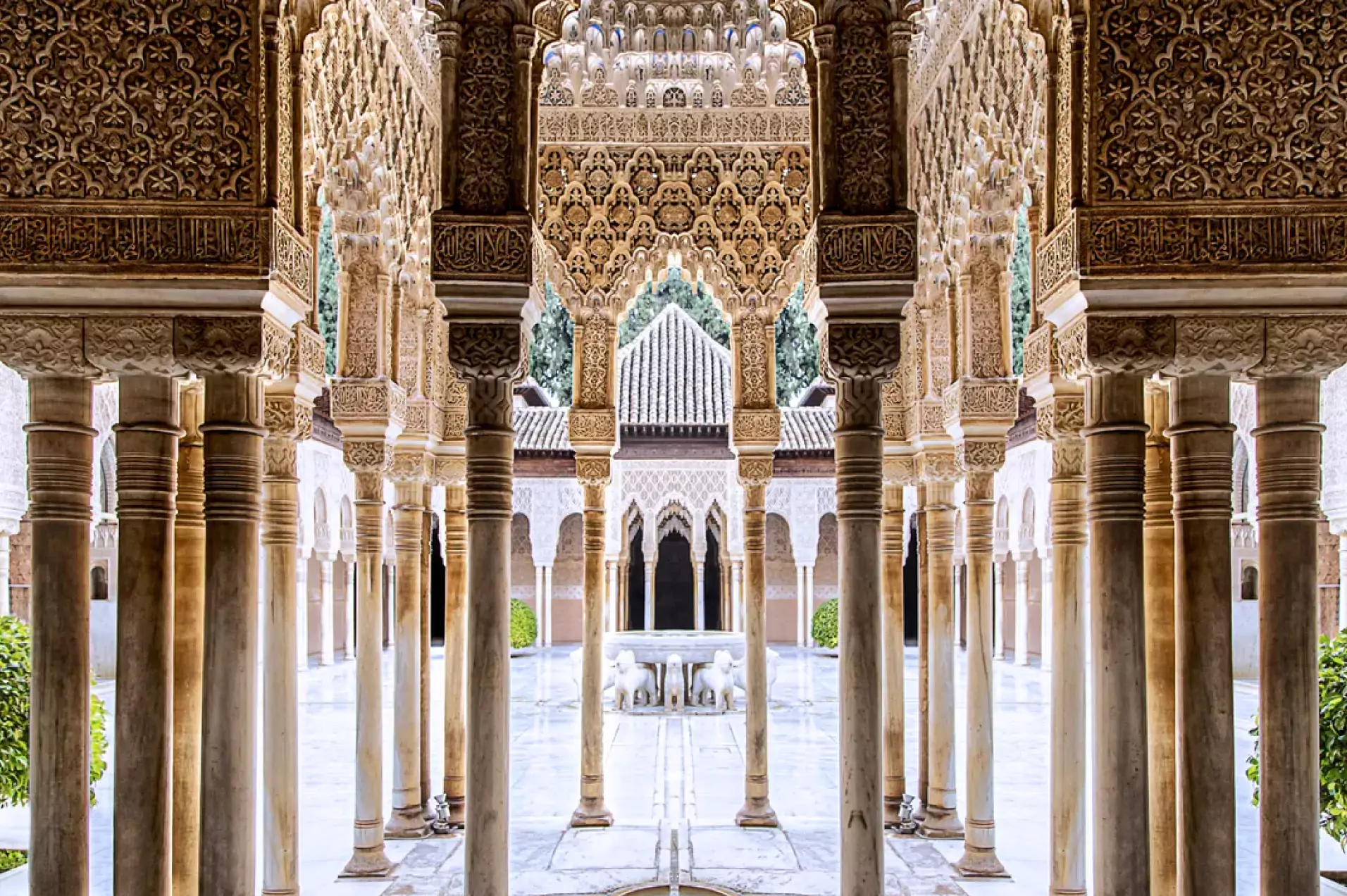
La Alhambra in Granada, Spain © Vishal Jhaveri
Fractal Geometry in Modern Architecture
In contemporary architecture, fractals serve both aesthetic and functional purposes. Their intricacy offers visual appeal while enhancing energy efficiency and resilience.
Architect Zaha Hadid’s fluid forms, for example, are inspired by fractal and organic shapes, giving rise to dynamic buildings that mimic natural forms. Antoni Gaudí, another pioneer, used nature-inspired, fractal-like geometry in works like the iconic Sagrada Família, showcasing how fractals can connect buildings with natural elements.
Today, architects continue the tradition of using fractals, particularly in Islamic modern designs, where fractal patterns enhance facades and interiors, maintaining a link to historical artistry.
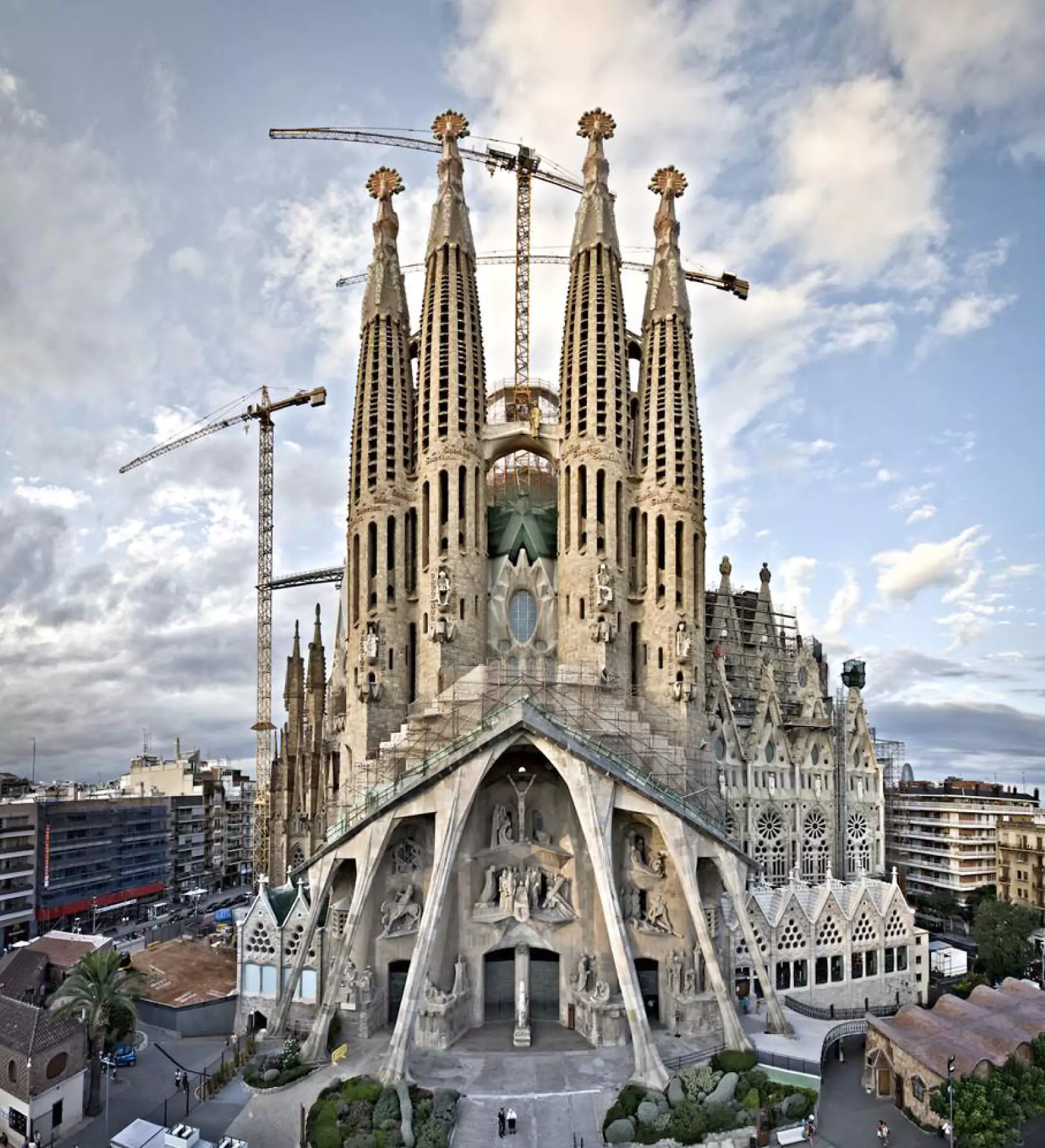
La Sagrada Familia utilizes 3D forms comprised of hyperboloids, parabolas, helicoids, and conoids | © Expiatory Temple of the Sagrada Família
The use of fractals in sustainable design is also gaining traction, largely through biomimicry—the practice of emulating nature’s processes. Fractals can improve energy efficiency by optimizing airflow, light distribution, and thermal comfort within buildings.
For example, the Eden Project in the UK employs geodesic domes based on fractal geometry to enhance light diffusion and temperature control, creating efficient and sustainable environments. In urban areas, fractal-inspired designs contribute to energy savings, with structures built to naturally reduce heat and energy use.
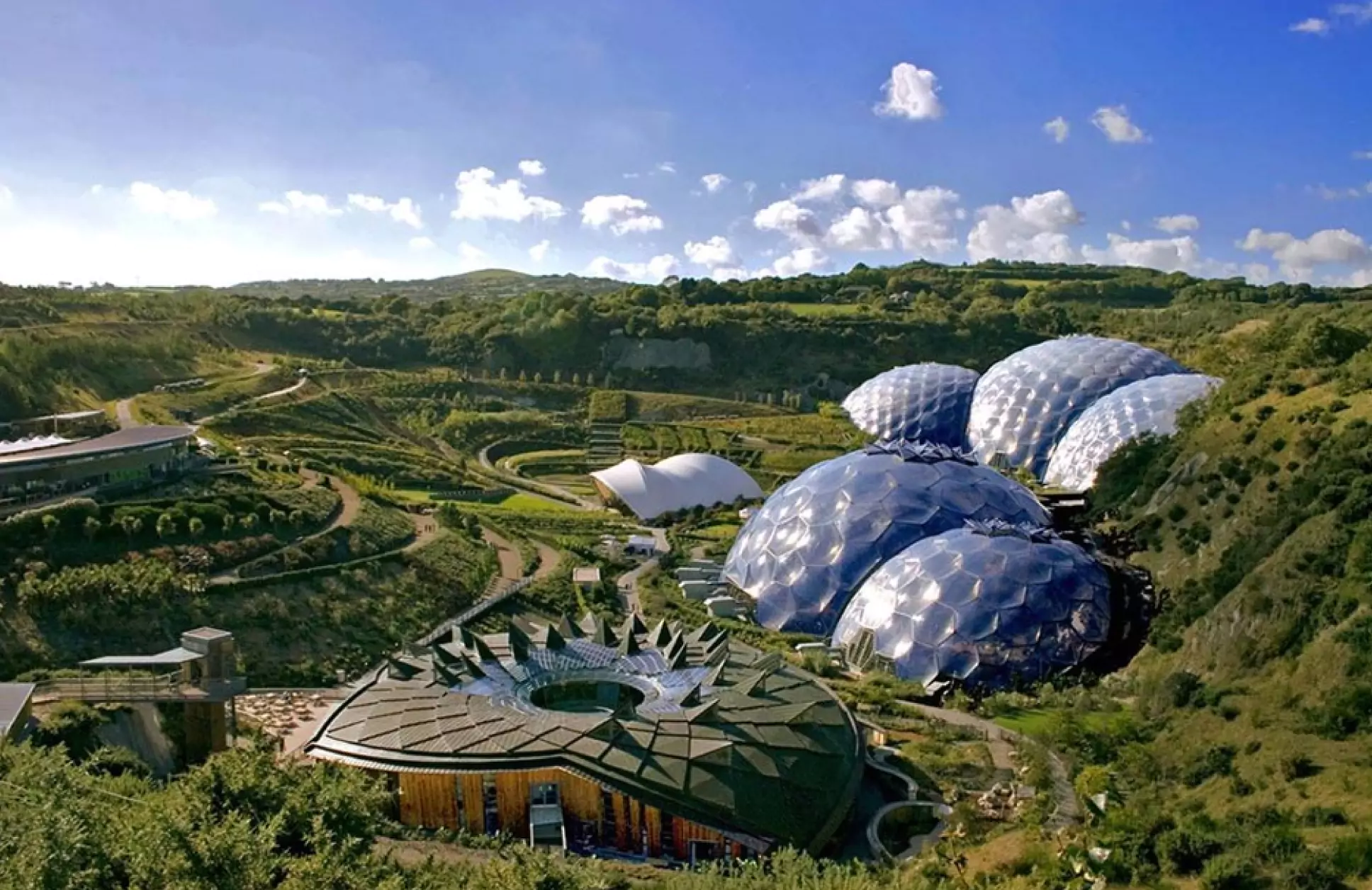
The Eden Project | Source
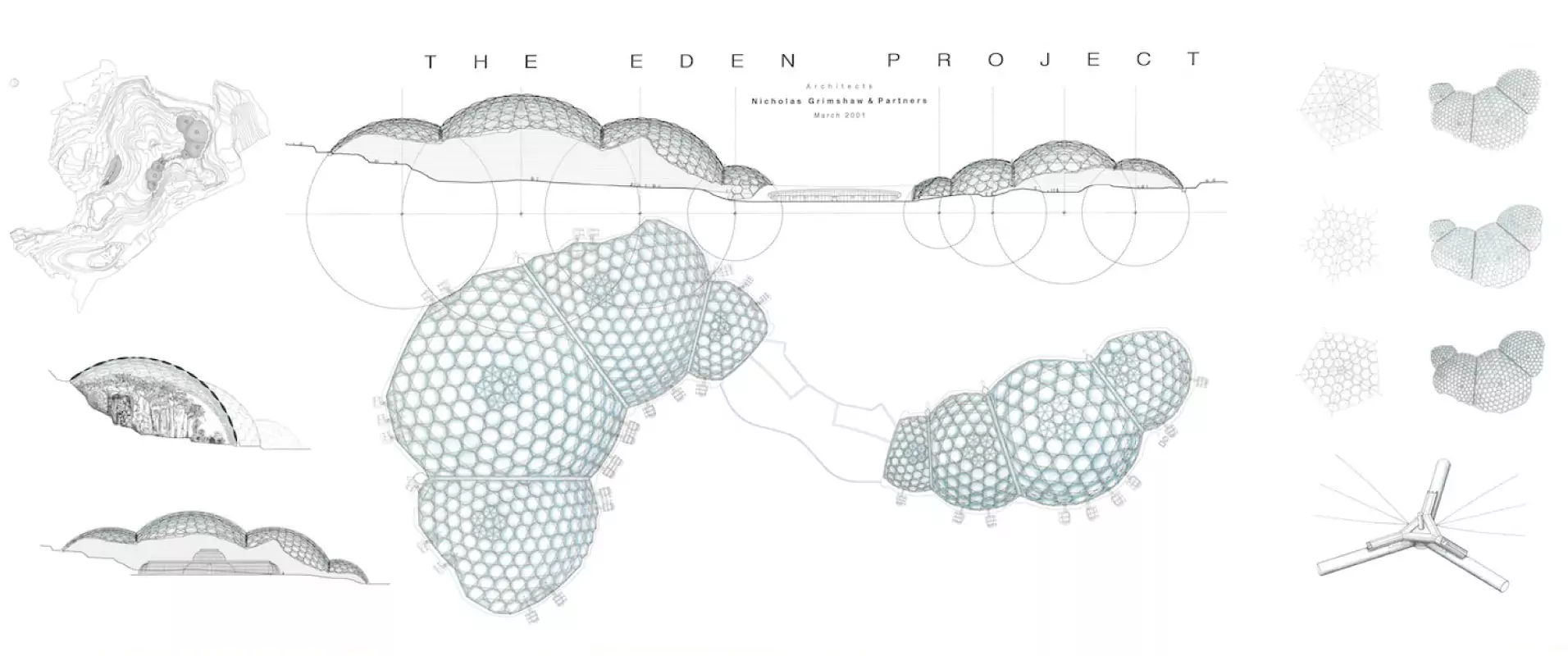
Impact of Fractals on the human brain
Studies show that fractal patterns stimulate a sense of calm and connection to nature, a concept known as biophilia. Since our brains have remained largely the same since prehistoric times, these biophilic responses continue to influence us.
Fractal designs in architecture can enhance well-being by bridging the gap between built environments and the natural world, providing occupants with a sense of tranquility often absent in urban spaces.
Another striking example of relatability in fractal architecture is Lieta Mercato, a shopping mall in Addis Ababa crafted by Xavier Vilalta, where fractal concepts shape the entire design. This structure blends traditional influences with a forward-looking vision, achieving harmony, cohesion, and stunning aesthetics. The design also connects with the local culture, as its facade draws inspiration from traditional Ethiopian women’s attire, allowing passersby to see a reflection of their heritage within the building’s form.
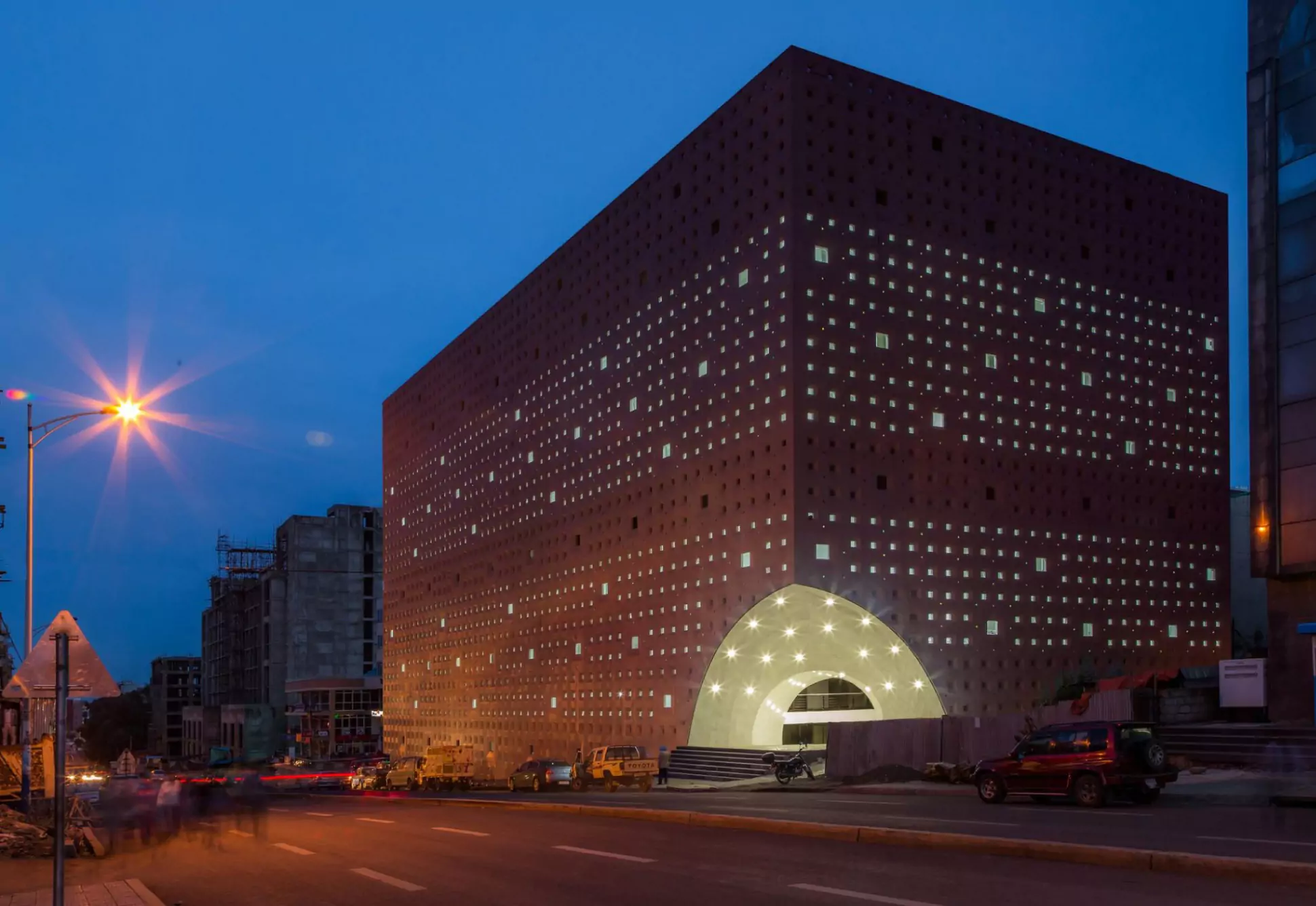
A night view of Lieta Mercato | © Gonzalo Guajardo
The Future of Fractals in Architecture
The integration of fractals in architecture is accelerating, thanks to advancements in computational design and AI tools. With parametric modeling, architects can now create complex fractal patterns at various scales and integrate them seamlessly into their designs.
Emerging technologies like 3D printing allow for the construction of detailed fractal patterns, while advanced materials make it possible to achieve durability and energy efficiency. Future smart cities could even employ fractal principles in urban planning, leading to holistic, eco-friendly spaces that adapt to human and environmental needs. The limitless and random nature of fractals has also been utilized in cartographic systems, making digital mapping more efficient with the help of complex fractal patterns.
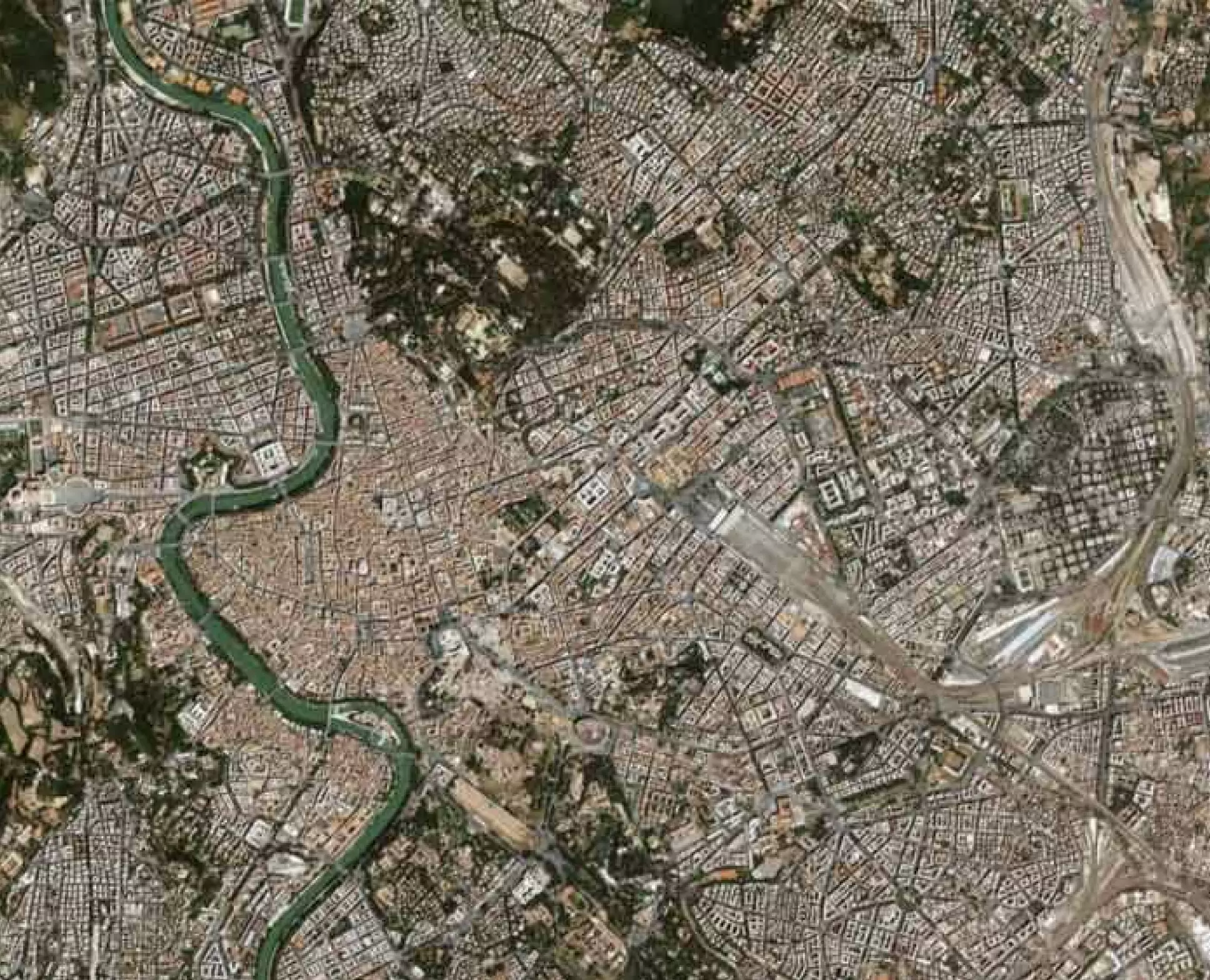
Rome is more of a fractal city with its roads going in different ways and its intermingling of different urban functions | Image courtesy of Google Earth.
Fractals are shaping the future of architecture, blending beauty with functionality to meet modern demands. As technology evolves, fractal-inspired designs offer exciting possibilities for sustainable, energy-efficient, and visually appealing structures.
References:
https://thearchitectsdiary.com/fractal-in-architecture-harmony-in-
https://www.re-thinkingthefuture.com/rtf-fresh-perspectives/a7137-fractal-geometry-in-architecture/
https://www.futurly.com/blog/fractal-in-architecture-geometry
https://designflyover.com/fractals-in-design-and-architecture/
https://www.treehugger.com/amazing-fractals-found-in-nature-4868776
